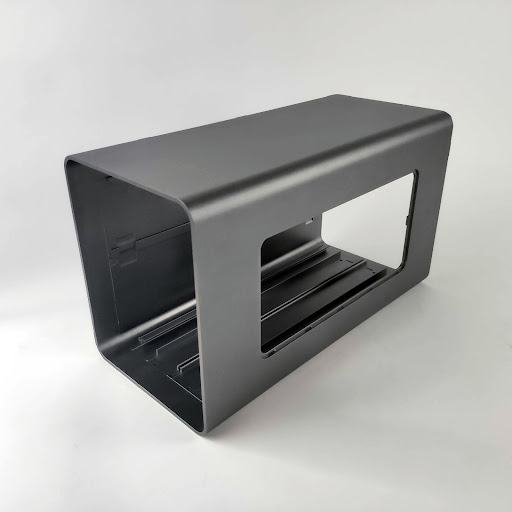Electronic enclosures contain various electrical and electronic components that can describe many products, often to protect items like instruments, components, computers, consoles, and other electronic devices. They protect the components and welfare of most electronic devices.
The enclosures manifest the properties, including protection against power dissipation, electrical breakdown, electromagnetic interferences. Rising demand for electricity and substantial efforts of the power industry to enlarge generation capacity has been increasing demands of electronic enclosures worldwide.
The demand for various electronic enclosures is increasing with the passage of time; they include a hygienic electrical enclosure, electronic console enclosure, robust enclosures (from oil, gas, metals, and mining disasters), and renewable energy sectors that are fueling the market growth.
Global Electric Enclosure Market Analysis
The growing need for enclosures in the sustainable energy sector is a critical element in developing the electric market, driven by factors such as rising industry costs, focus on the cities of developing areas, and strict safety, among others. Apart from that, rising industrial automation and product integration will enhance the development rate of the electric enclosure market. However, price competitiveness and seal leakage are the factors that will hamper the market’s growth rate.
This electronic enclosure market report provides information about recent developments, import & export analysis, the impact of domestic market players, market resolution changes, production analysis, market size and growth, product launches, geographical expansions, etc.
Electric Enclosure Market Scope & Size

The electric enclosure market is segmented on the following fundamental factors such as:
- The material type electric enclosure market has been divided into two materials, metallic and non-metallic enclosures.
- Mounting type, electric enclosure market is segmented based on wall-mounted, free-standing, and underground electric enclosures.
- This market is also segmented based on form factors such as small, compact, and free-size electric enclosures.
- The vertical electric enclosure market is divided based on industry verticals, including oil and gas, metals and mining, pulp and paper, food and beverages, and generation and distribution.
Electric Enclosure Market Innovation & Advancement
Innovation and advancement in the electronic enclosure design are crucial against the background of progressive changes in electronic system architecture. Designers are producing advanced models that are fully satisfied according to the client’s requirements, confessing to the critical needs of modern electronic systems. Right now high quality sheet metal services are applied to fulfill the designer’s requirements.
Modern enclosure designs assert advanced features reducing the product cost and making them more affordable and durable, including fire protection, explosion-proof, high compression strength, etc.
Country Level Analysis
The country section of the electronic enclosure market offers individual market impacting factors and changes in the administration in the market that impacts its trends. There are some major cautions to forecasting the market scenario for individual countries, such as consumption volumes, price trend analysis, etc.
The electric enclosure is analyzed, the size, volume, and information are provided to the country based on segments referenced above, such as material type, mounting type, form factor, and industry vertical.
In the electric enclosure market report, the following countries are mentioned: the United States, Germany, France, the United Kingdom, the Netherland, Switzerland, Belgium, Malaysia, Australia, Thailand, the Philippines, Saudi Arabia, the United Arab Emirates, China, Argentina, Brazil, Japan, India, Israel, Egypt, South Africa, and the rest of Asia, Europe, the Middle East, and Africa, as well as South America.
Consideration when start an Electronic Enclosure Business
Electronic and electrical designs are housed in steel enclosures, which are sturdy, secure, and dependable environments. When you start an electronic enclosure project, there got several factors you need to take into consideration:
Determining The Industrial Enclosure Material
The materials that you choose for your industrial enclosure offer different protective benefits that impact the lifespan and performance of the electronic components housed within. There are some considerations to remember when choosing the material.
Environment Consideration
Before choosing the materials for an industrial enclosure, you should determine the surrounding environment that will be fit for exposing the enclosure. Do dust particles, corrosive gas, or liquid exist in the air, or what about the weather? Or what temperature will be required to expose the enclosure?
Strength Consideration
Secondly, you should determine material strength and weight when specifying an enclosure that will house. Metallic enclosures can carry greater loads than non-metallic enclosures that cannot withstand too much weight or support heavy loads. All this needs to be well considered in your enclosure design.
Conductivity
When installing internal equipment, metallic enclosures require grounding to ensure operator safety because they can conduct electricity. On the other hand, non-metallic enclosures cannot conduct electricity; they provide safety barriers to the operators isolatedly. But both of the enclosures require the external ground to ensure a clear path to the ground.
Conclusion
An electrical enclosure is a cabinet that protects electrical and electronic components while also adding aesthetic appeal. The electrical enclosures market in the United States is expected to reach US$1.9 billion by 2022, according to industry estimates. While when you are new to the electronic enclosure business, it’s never wrong to do research in advance.






